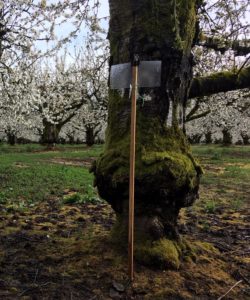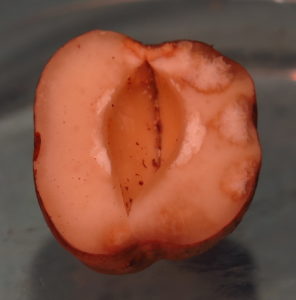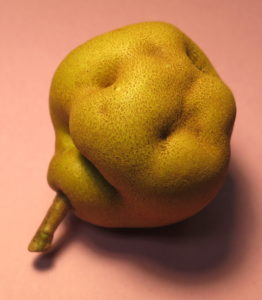Background
BMSB is a pest native to Asia and was first observed in Oregon in 2004. It is a nuisance pest in urban areas and an agricultural pest in vegetables, fruit crops, and hazelnuts. In the eastern USA, where BMSB has been established since the early 2000s, damage to fruit crops is severe. Current management programs are heavily reliant on insecticides. However, chemical control is not always effective due to BMSB’s movement patterns between crops and ornamental hosts.

Biological control
Trissolcus japonicus
Managing BMSB may improve due to the arrival of samurai wasp (Trissolcus japonicus), a small parasitoid wasp native to the same region as BMSB. This wasp attacks BMSB eggs, lays its own eggs inside, and completes its development inside the stinkbug eggs. BMSB eggs that have been parasitized by the wasp are best recognized by an unusually dark color or by the irregularly shaped emergence holes.


Currently, we are studying samurai wasp behavior and the potential for samurai wasp establishment in hazelnut and small fruit orchards, with some success in areas bordering crops that contain adequate habitat. Please check out the resource section of this page to view a guide for identifying samurai wasp presence.
Astata bicolor

This predatory wasp species attacks stink bug nymphs. After locating a nymph, a female wasp incapacitates it with her stinger and carries it to her nest, where she lays her own eggs atop the nymph. As the wasp’s larvae hatch, they feed on the incapacitated nymph. We initially found A. bicolor in the Portland metropolitan area, but since that time they have been observed in the surrounding vicinity, indicating that they are fairly widespread.
Monitoring
Several trapping techniques that capture BMSB and detect population patterns are available. Pyramid traps baited with an aggregation pheromone can detect BMSB, even at low densities. However, these traps are most effective later in the summer and early fall. We have found that clear sticky cards mounted on 5-foot wooden posts baited with an aggregation pheromone provide similar detection sensitivity compared with pyramids, and are less cumbersome (and less likely to get run over). Placing traps on crop borders, particularly if there is a known overwintering location such as a structure nearby, helps detect BMSB as they enter the crop.


Pictured above: sticky card trap on post (left), pyramid trap (right)
BMSB also cause damage to fruit and nuts. Pictured below are some examples of feeding damage. Note the white corking inside the hazelnut on the left, and the deformed catfacing on the pear on the right.


Resources
Webinar on management and biological control
Management of BMSB in orchard crops
A guide towards identifying and managing BMSB in orchard crops.
Report sightings of BMSB adults and nymphs in Oregon
Reports from citizens and growers are imperative to identify the continued spread of this invasive insect and to evaluate the risk of damage to different crops. Help monitor the distribution of Brown Marmorated Stink Bug in Oregon by reporting any sightings of the pest.
How to identify samurai wasp?
Print and mobile-friendly guide available in English and Spanish.
Report samurai wasp in Oregon
The samurai wasp is being evaluated for control of BMSB. Visit this link for information about how to detect and report findings of parasitized BMSB egg masses.
Identifying BMSB and other stink bugs in Oregon
The Oregon Department of Agriculture has produced a user-friendly guide of stink bugs in Oregon.

